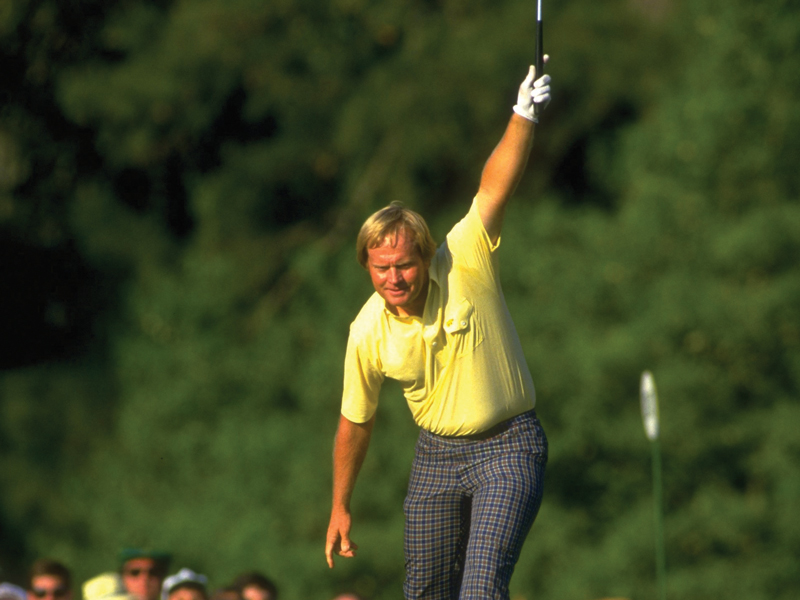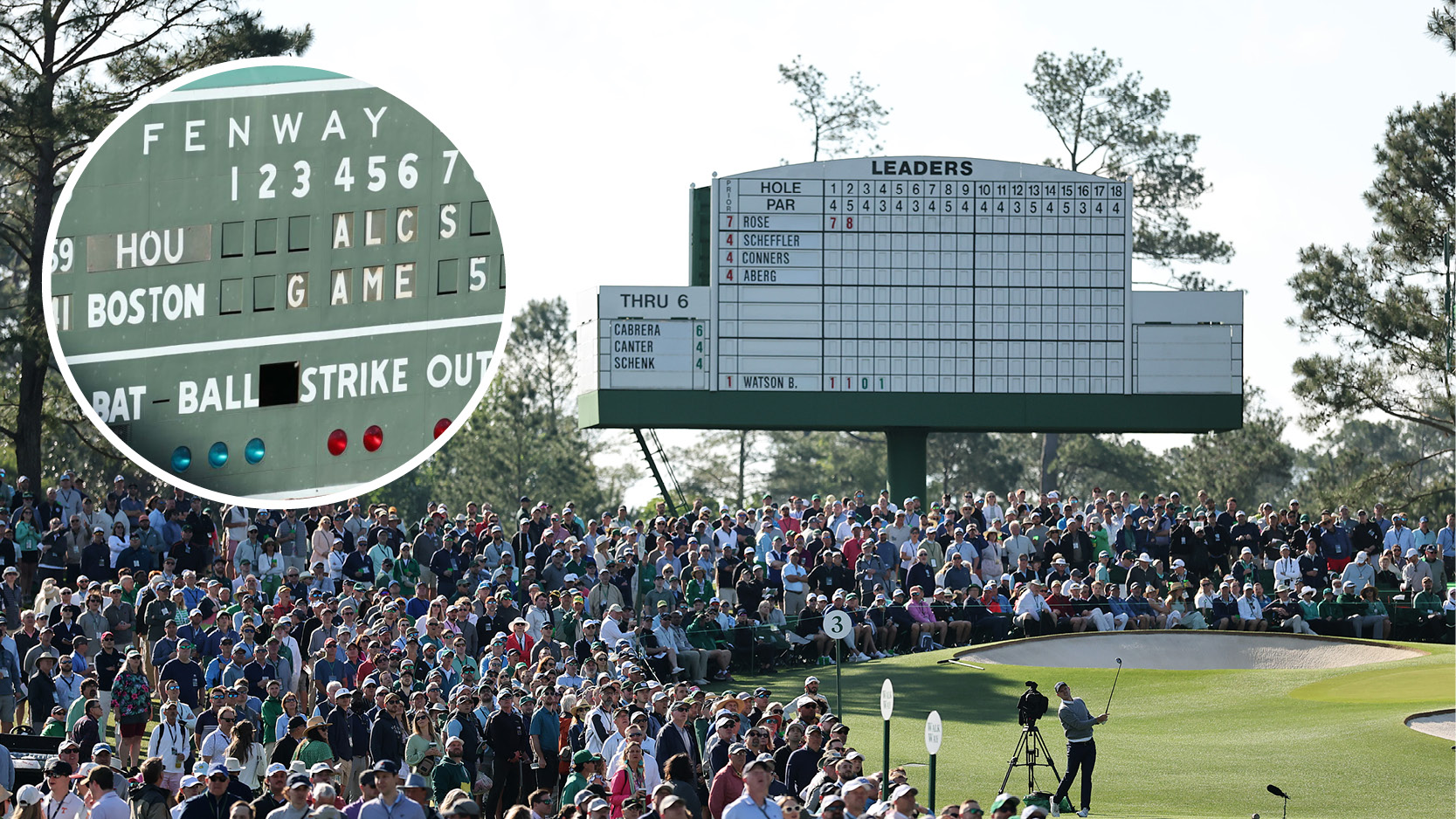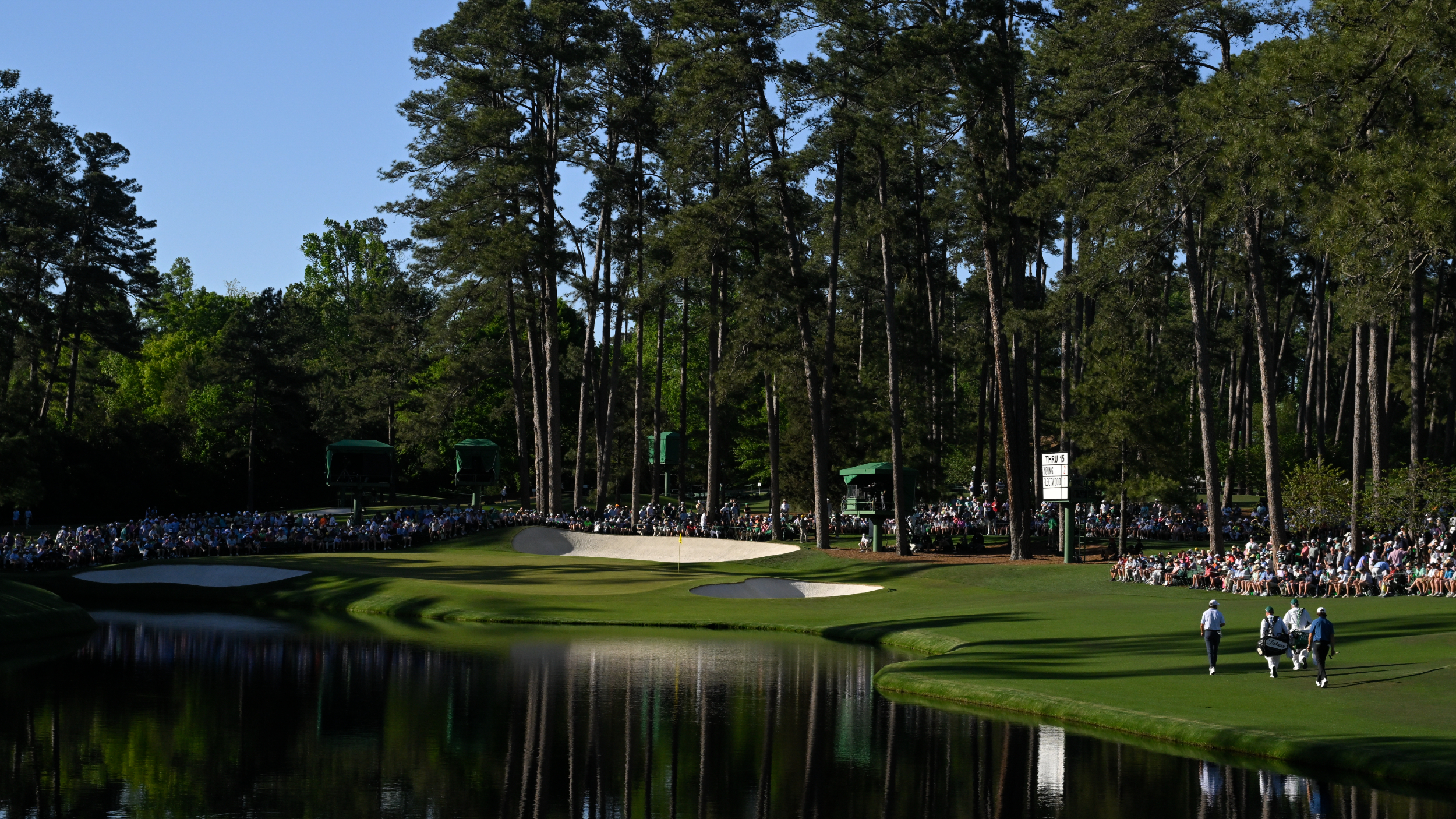Jack Nicklaus wins the 1986 US Masters
Twenty-nine years after the Golden Bear's greatest major triumph, Golf Monthly looks back on his epic 1986 Masters victory


It remains one of the greatest and most iconic days in golf, when a 46-year-old Jack Nicklaus won his 18th and final Major Championship
For any sport, the personal attachments are endless. In fact, it’s long been a theory that certain sporting events become more a rite of passage than simply a competition for podium positions.
The individual moments of skill, the epic comebacks, the demoralising defeats and those trailblazing victories – they all serve as by-products to a sport’s complex emotions, which, in turn, create a conveyor-belt of lasting memories. It may sound extreme, but such moments have a huge bearing on the way many people shape their lives.
When I first saw Jack Nicklaus winning the US Masters in 1986 at the age of 10, I had little understanding or appreciation of the victory. A golf-mad family and a smattering of books around the house meant I knew who Jack was, but there was no knowledge of the Masters or, for that matter, the fact that a 46-year-old had just completed one of the most extraordinary feats in modern-day sport.
What I did have, however, was an image: the sight of Nicklaus wielding his putter towards the clouds, knees bending as he begins to stalk down a grease-like putt on Augusta National’s 17th green. It's the image you can see above, captured wonderfully by the legendary golf photographer, David Cannon.
From replayed television footage or numerous still shots, you can’t really make out much of the hole due to the ground-level camera angle and the rolling contours of the green. But you rely on Jack’s piercing eyes – and the rising heads of the galleries – to let you know it’s searing dead centre towards the cup. Once it drops, all hell breaks loose.
Over the years, personal research has helped to develop a sharper understanding of how Jack won on that day. There are many other powerful images, but this single moment carries with it something much deeper. It resonates with golf fanatics more than Jack being presented with his sixth Green Jacket by Bernhard Langer, more even than Jack accepting the applause on Augusta’s 18th after completing the back nine in just 30 strokes for a Sunday 65.
Get the Golf Monthly Newsletter
Subscribe to the Golf Monthly newsletter to stay up to date with all the latest tour news, equipment news, reviews, head-to-heads and buyer’s guides from our team of experienced experts.
I sometimes wonder if things had turned out differently. What if the great man had bogeyed the 18th to finish one back? Or if Greg Norman hadn’t pushed his approach into the galleries on the same hole to end any hope of a two-way play-off? Would we still picture this with the same feeling of romance? The answer is, undoubtedly, no.
IN PERSPECTIVE...
For Nicklaus, this victory, his sixth Masters and 18th Major Championship, was the defining moment in a career that had spanned over three decades. It came 23 years after his first Masters win and would close the book on the passage of the planet’s most revered golfer.
But it was also the crowning glory for a player whose best days were deemed to be well behind him. In competitive terms, Nicklaus was too old, and in his last seven tournaments a best return had been for 39th place, with three missed cuts.
Heading into the Masters, he was 160th on the US Money List. It had been almost six years since his last Major win, the 1980 USPGA Championship at Oak Hill, and he started the final round four shots off Greg Norman’s 54-hole lead in a tie for ninth place.
With too much traffic in front of him, the eyes of the galleries would feast elsewhere, most notably on the swashbuckling Seve Ballesteros – already a two-time winner with the artistry to make the ball talk on Augusta’s mogul-like greens. Making his way to the 10th tee on three-under (he had just birdied the 9th) the Golden Bear was still acting as something of a bit part.
What followed was almost surreal. Unrelenting and with the crowd screaming his ball towards the hole, Nicklaus would turn the tables on the field.
The statistics of his charge for home are staggering: a birdie at the 10th, followed by another at the 11th; bogey on the par-3 12th, but a Sunday graveyard for so many; birdie at 13, five-under; par the narrow 14th – still four shots adrift; eagle the 15th; knock it stiff on 16 for an uphill six-footer; out of position from the tee on 17, find the surface but a steep downhiller awaits. Birdie – Jack’s sixth single putt on the back nine. Nine-under-par. Outright lead. Two jabs from deep for par on the 18th confirms his position as the clubhouse leader.
And while Jack was flexing his muscles, the strain was beginning to tell on the rest of the field. Ballesteros, who had eagled the 13th, sensed the heat from Augusta’s favourite and went for the kill on 15.
With 198 yards to the flag, he pulled a horrid 4-iron far left and short into the water. A bogey meant he was still in the mix, but the head was dropping and he would eventually finish two shots back on seven-under. “I played very good,” said Ballesteros. “Just one bad shot, that’s all.”
Norman, meanwhile, had enjoyed a steady round from the front but had work to do to catch up. With Jack already tackling the media around the clubhouse, the Australian tied for the lead on the 17th, holing a 12-footer. Left with a 4-iron into the 18th, Norman sliced his approach six rows deep into the greenside spectators and failed to get up and down for par.
No need for extra holes. In its 50th year, the Masters had its oldest winner at 46 years and 82 days. Nicklaus also became the second oldest man to win a Major behind 1968 USPGA winner Julius Boros, who was 48 years and 33 days at the time. “This was maybe as fine a round of golf I have played,” he later said.
LEAGUE OF ITS OWN
While it is natural to compare the recent exploits at Major Championships of Norman (Open Championship ’08 at the age of 53) and Tom Watson (Open ’09 aged 59), Nicklaus’ achievement 29 years ago remains unsurpassed.
The achievements are simply incomparable; Norman and Watson’s challenges were a constant theme over four days of tournament golf. In the end, they were beaten as much mentally as for dropping shots on their final 18.
Nicklaus’ win was unlike anything before or since. It was compulsive viewing: a slugfest of golf where the old-timer cornered and toyed with his younger opponents before throwing a series of haymakers to send them to the canvas.
Many would challenge the 1986 Masters’ standing with the heroics of the same tournament ten years later. They would have a case. The 1996 Masters was pulsating in every way. Again Norman played a lead role; again he was the 54-hole leader; again he was tripped up – this time by a powerhouse Nick Faldo who closed him out with a brush of brutality to turn a six-shot deficit into a five-shot winning margin.
But while Faldo’s come-from-behind victory stirred up some of the most epic moments in Masters history, it also marked one of the darkest final days in Major championships. Just like Jack’s victory ten years before, Norman’s loss was the defining moment for arguably the era’s greatest golfer, rubberstamping his own failures in nearly two decades of fruitless challenges at Augusta.
In hindsight, Faldo’s win was for Faldo. Jack’s win was for golf.

Alex began his journalism career in regional newspapers in 2001 and moved to the Press Association four years later. He spent three years working at Dennis Publishing before first joining Golf Monthly, where he was on the staff from 2008 to 2015 as the brand's managing editor, overseeing the day-to-day running of our award-winning magazine while also contributing across various digital platforms. A specialist in news and feature content, he has interviewed many of the world's top golfers and returns to Golf Monthly after a three-year stint working on the Daily Telegraph's sports desk. His current role is diverse as he undertakes a number of duties, from managing creative solutions campaigns in both digital and print to writing long-form features for the magazine. Alex has enjoyed a life-long passion for golf and currently plays to a handicap of 13 at Tylney Park Golf Club in Hampshire.
-
 Did You Know The Masters Leaderboard Was Inspired By Fenway Park?
Did You Know The Masters Leaderboard Was Inspired By Fenway Park?The Masters leaderboards are an iconic and historic part of the Augusta National Major, but did you know about its origins and how it operates today?
By Matt Cradock Published
-
 Why The 16th Pin Has Been Moved From Its Traditional Spot For The Masters Final Round
Why The 16th Pin Has Been Moved From Its Traditional Spot For The Masters Final RoundThe 16th pin at Augusta National is in an different position that normal for the final round of The Masters, but why is that?
By Mike Hall Published